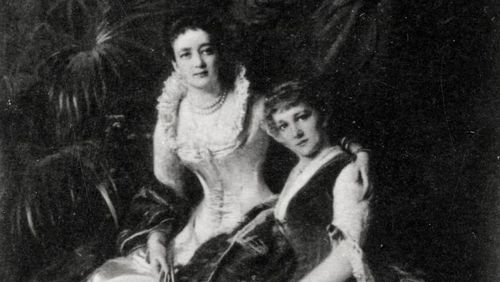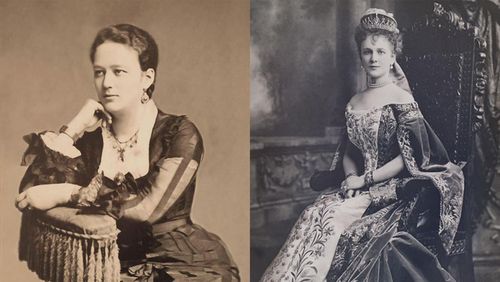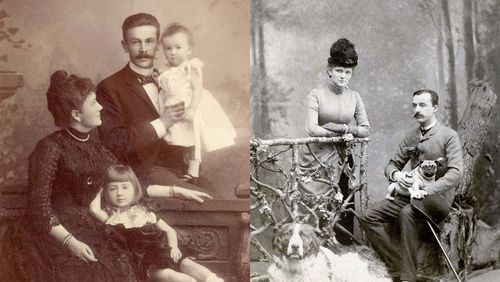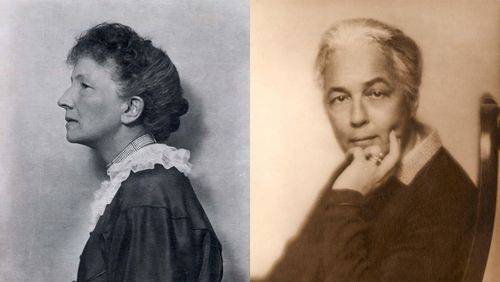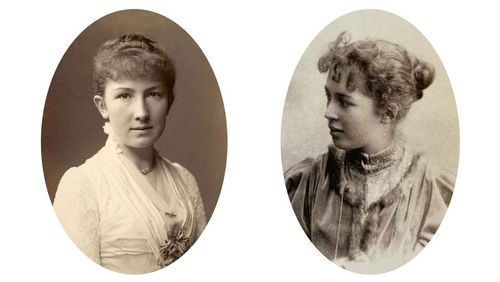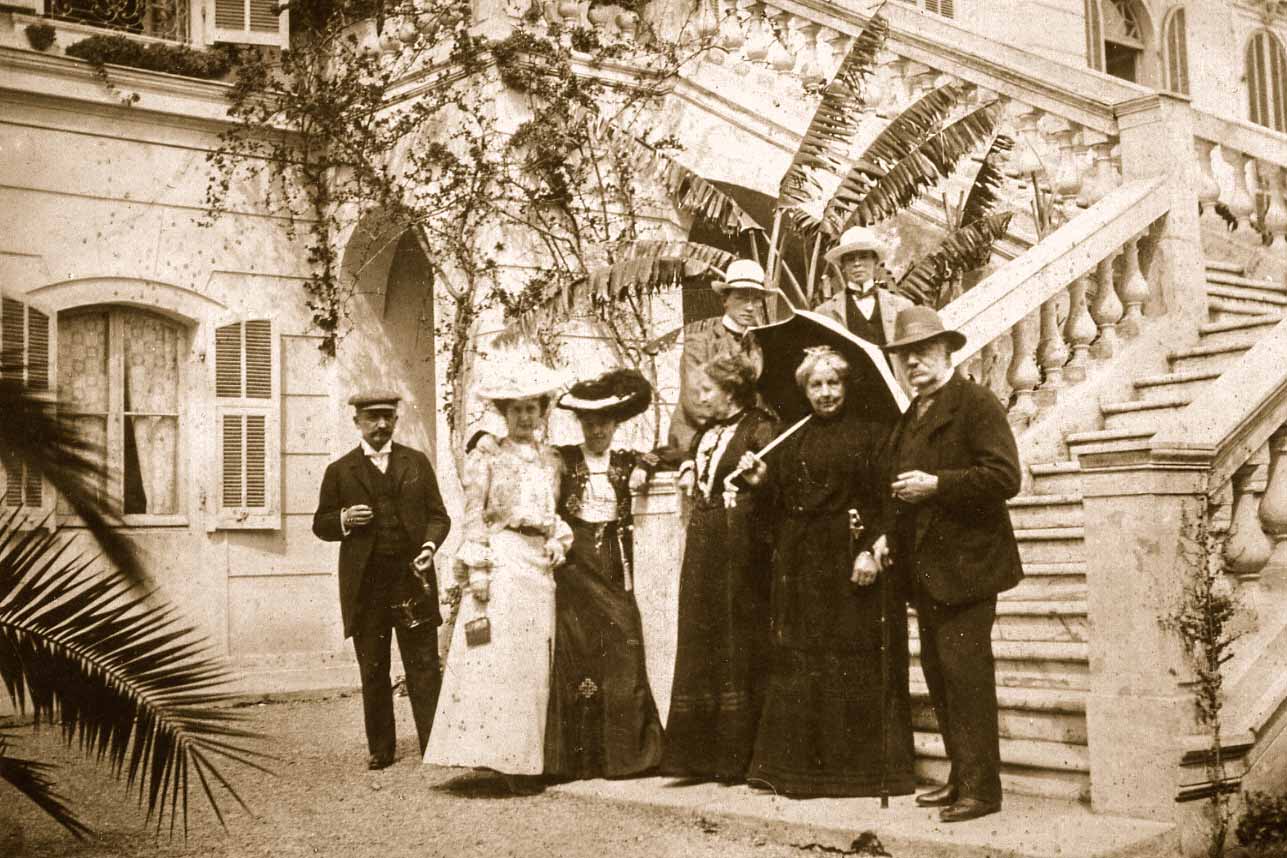
Close ties to the Siemens Family
Born in 1874, Nora Füssli—well educated, well bred and devoted to music—charmed the menfolk with her beauty and captivating ways. Of her four husbands, two shared her passion for music—both of whom were members of the Siemens dynasty. Shortly before her death in 1941, Nora von Siemens, née Füssli, bequeathed her considerable assets to the Werner Siemens Foundation, firmly establishing her legacy as a major benefactor.
Nora’s father, Wilhelm Heinrich Füssli, was born into an old Zurich family whose origins can be traced back to the 13th century. Over several generations, the Füsslis had established themselves as an affluent family in the artillery casting industry. But Wilhelm Heinrich chose to leave the austerity of Protestant Zurich behind to pursue a career as portrait painter.1 Nora’s mother, Emma von Möllenbeck, came from a very different background. Raised a Catholic, she was descended from a long line of German nobility on her mother’s side. Before her marriage, Emma relished her life as lady-in-waiting to the Grand Duchess Maria Maximilianovna, also known as her Imperial Highness Princess William after her husband, Prince William.
Artist father, courtly mother
Nora’s parents met in the spring of 1869. Although both were past the first blush of youth, they fell passionately in love and married that same year. Five years later, they had their first and only child, Anna Eleonora, whom everyone simply called Nora. But having a child exacerbated the couple’s differences. Nora’s father avoided family life in Karlsruhe and pursued his work as a portrait painter wherever it led him. Nora’s mother felt abandoned with her young child, and she yearned for her earlier life at court. In 1890, Emma and Wilhelm Heinrich separated, although they never divorced. Nora was 16 years old at the time. From then on, she lived with her mother in Karlsruhe and Baden-Baden, where they often attended social events: dinners, tea parties and the opera. Emma was hoping to make a good match for Nora, now just shy of 20, something that seemed highly likely, as Nora “always made a strong impression, especially on the gentlemen”2. At a soirée, Nora met Werner Hermann von Siemens, who led a quiet life following his divorce from an unhappy marriage. The two quickly discovered their shared love of music, playing together already at their second meeting: “Werner Hermann played his Stradivarius and Nora was his animated accompanist” 3 on the grand piano. For Werner Hermann von Siemens, it was apparently love at first sight, and Nora soon returned his interest.4 They married in 1895, just a few weeks after first meeting. Nora Füssli was 21 years old.
Marriage to Werner Hermann von Siemens
Werner Hermann was the son of Carl von Siemens and a nephew of Siemens founder Werner von Siemens. At the wedding, Carl gave Werner Hermann a life annuity of 25 000 marks, while Nora received 6 000 a year from her own father—guaranteeing the couple a carefree life. The matters of estate were also agreed upon the marriage: should Werner Hermann precede Nora in death, the widow would receive unconditional, lifelong usage rights to his estate. Nora and Werner Hermann spent their summers in the regal Palais Biron with its expansive park in Baden-Baden, and their winters in St Petersburg. They had a large music room built, where they held many a house concert. In 1896, the couple had a son, whom they named Werner Wilhelm Carl. The parents were overjoyed, and grandfather Carl von Siemens was delighted to have a young namesake. Sadly, the happiness was short-lived. The boy died at the age of two, and more tragedy was to follow. Just two years later, Werner Hermann died suddenly of appendicitis, aged just 44. In a letter, Nora’s mother asserted that had he fallen ill in Germany, Werner Hermann would most likely have undergone an operation and would have been saved.5
Charlotte, Marie and Nora
After Werner Hermann’s death, Nora left Germany and moved to Rome, but remained in close contact with her father-in-law, Carl von Siemens, and her sisters-in-law, Charlotte von Buxhoeveden and Marie von Graevenitz. (Some 20 years later, the two sisters established the Werner Siemens Foundation.) Nora’s health suffered after her tragic losses. To regain her strength, she spent the spring of 1904 in the mild climes of San Remo, where she met Freydoun Malcom Khan, a Persian prince and an acquaintance of Carl von Siemens who was in attendance at all official gatherings.
1 Yvonne Gross and Ludwig Scheidegger, Nora Füssli,
Thomas Helms Verlag, Schwerin, 2018. p. 16.
2 Gross/Scheidegger, p. 62.
3 Gross/Scheidegger, p. 76.
4 Gross/Scheidegger, p. 77.
5 Gross/Scheidegger, p. 84.
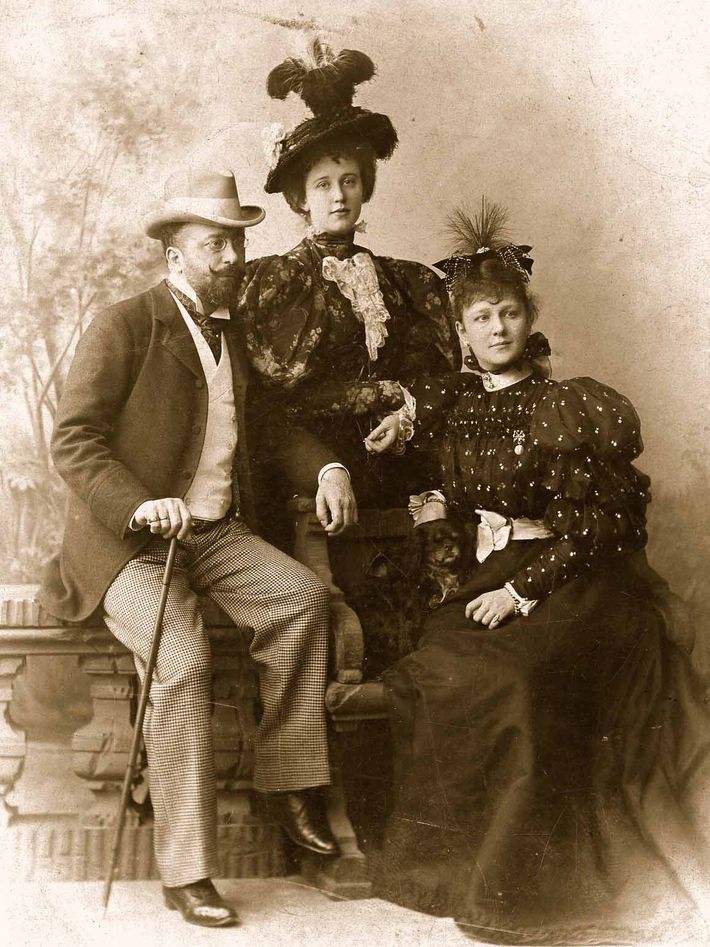
The charming prince
Nora had a weakness for all things Middle Eastern, and she soon fell for the charms of handsome Freydoun. The wedding was held in Berlin, in 1905. After their civil wedding service, the couple headed directly to the notary public to conclude an agreement on marital property. Because Nora had a life annuity of over 80 000 francs from the Siemens family fund, yet the prince commanded only 3 000 francs yearly, the couple agreed to a complete separation of property. The newlyweds then relocated to Rome, where they moved in the beau monde. But Nora never found happiness with her prince: he spent her money with little compunction, and the couple divorced in 1908.
Accusations of spying
After her divorce, Nora again used the name “von Siemens”. She discovered new happiness and began holding a salon in her residence, welcoming dignitaries from the Quirinal Palace and the Vatican, government officials and high-ranking military men—many of whom actively courted Nora. But Nora’s social triumphs attracted ill will: in a series of unfortunate events, she was accused of spying. Turf battles broke out: some gentlemen incited harsh accusations against Nora, others defended her innocence. Some disputes even made their way to the Italian parliament, where ugly scenes ensued, ranging from personal insults to physical assaults. Then, in 1910, a fateful duel took place: General Luigi Fecia di Cossato took up his sword to defend Nora’s virtue—and lost. Nora rushed to his side to nurse him back to health—and to marry him. Despite the 33-year age difference, the marriage was happy and lasted 11 years, until the general’s death in 1921 at the age of 80.
Ties to the Siemens family
Nora, aged 47 and widowed a second time, again found solace with the Siemens family. In addition to Carl von Siemens and his daughters Charlotte and Marie, Nora was also close to the sons of Werner von Siemens, Arnold and Wilhelm, and to their families. On her visits, she often came into contact with Wilhelm’s son, Werner Ferdinand von Siemens, the grandson of Werner von Siemens, founder of the Siemens firm. Werner Ferdinand was 11 years younger than Nora. He had studied electrotechnology and took up employment in the Siemens & Halske company when he was 25. When he met Nora, Werner Ferdinand already had two unhappy marriages behind him.
Happy years
At the start of the 1920s, Werner Ferdinand and Nora began meeting frequently. At 49, Nora was a beautiful, vivacious woman who shared her love of music with Werner Ferdinand—an excellent pianist with a passion for conducting symphony orchestras; in 1923 he even led a concert of the Berlin Philharmonic. Just a few weeks after the performance, Werner Ferdinand hired an estate at Lake Lugano, and Nora had her furniture sent to the new residence where the two soon married. But society in Lugano was a rather drab affair, and the couple returned in 1925 to the Correns estate in Berlin, a manor with expansive grounds and a tennis court. The Berlin of the time was a thriving metropolis with countless opportunities to encounter intellectuals, artists, diplomats and other illustrious personalities.
High life in the roaring twenties
Nora enjoyed Berlin society in the roaring twenties—but music remained the focus of her life with Werner Ferdinand. Because Werner Ferdinand had excellent relations with Berlin’s musicians, he was able to pursue his passion for conducting. In 1928, the couple invited over 400 guests to a reception with an orchestra. Nora was responsible for planning and catering to the guests, and Werner Ferdinand conducted the orchestra. After the concert, there was a grand buffet and a dance—a night of imbibing in French champagne and caviar. One guest wrote approvingly, “Finally, after years of drought, a party of the superlative.” 6 And still, Werner Ferdinand felt the rooms at the estate were not up to standard ... and with no further ado had a concert hall built. In 1929, the opening of the new hall was celebrated, with notable personalities from the whole of Europe. Nora and Werner Ferdinand also adored going to the theatre and the cinema; the latter was a fairly new invention at the time. The silent films were accompanied by live music, often featuring theatre organs. Indeed, those organs came to fascinate Werner Ferdinand. The Siemens company had grown to a major company generating millions in revenue and employing thousands—so why not splurge on a theatre organ? Werner Ferdinand purchased a Wurlitzer for his private concert hall—and framed his prized possession with four concert grands. At the party to celebrate the Wurlitzer, Werner Ferdinand conducted the overture from Wagner’s Meistersinger and treated his guests to dance music and jazz as well—the event, with prominent guests from Germany and abroad, was a smashing success.
Fast cars, family matters
From 1919 to 1927, Werner Ferdinand was an official representative of Protos-Automobil, a car manufacturer temporarily owned by Siemens. Werner Ferdinand had a passion for cars—not even his collision with a beer lorry diminished his enthusiasm. In his red Maybach, he and Nora motored to Bayreuth to attend the Bayreuth Festival, to Baden-Baden to visit the spa and gamble at the casino, and even to Monte Carlo, where the first Grand Prix was held in 1929. In reality, Werner Ferdinand should have been attending to the family firm, a local reporter admonished in 1932, adding that the scion of company founder Werner Siemens apparently had no mind for practical matters—that Werner Ferdinand was interested only in Wagner and Brahms. And cars of all kind.7 Werner Ferdinand’s three children from his first marriage were by now coming of age: son Peter entered Siemens & Halske in 1934, his daughter Irene married the business magnate Oskar R. Henschel (locomotives, lorries, omnibuses, aircraft) and son Carl Wilhelm studied economics. In May of 1937, Werner Ferdinand and Nora visited his first grandchild. He then died in July of the same year, of a tumour in an advanced stage. He was 52.
Final years
Nora was happily married to Werner Ferdinand for 14 years. After his death she led a quiet, secluded life. She was 65 years old at the time and suffered ill health. On 19 July 1939, she wrote her last will and testament, bequeathing her entire estate to the Werner Siemens Foundation in Switzerland. Nora’s last years were spent in Munich hotels, together with two loyal servants. On 19 February 1941, Nora von Siemens, née Füssli, closed her eyes for the final time—retaining her sense of luxury and style to the very end: according to family legend, she wore jewels in her final hour.
6 Gross/Scheidegger, p. 146.
7 Gross/Scheidegger, p. 152.
Text: Brigitt Blöchlinger
Photos: Siemens Historical Institute, Berlin
